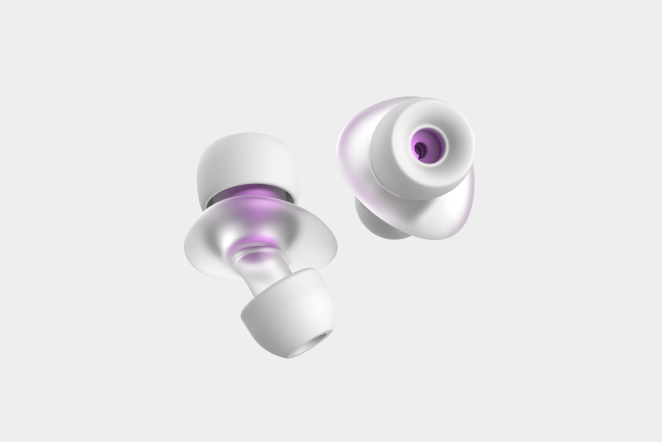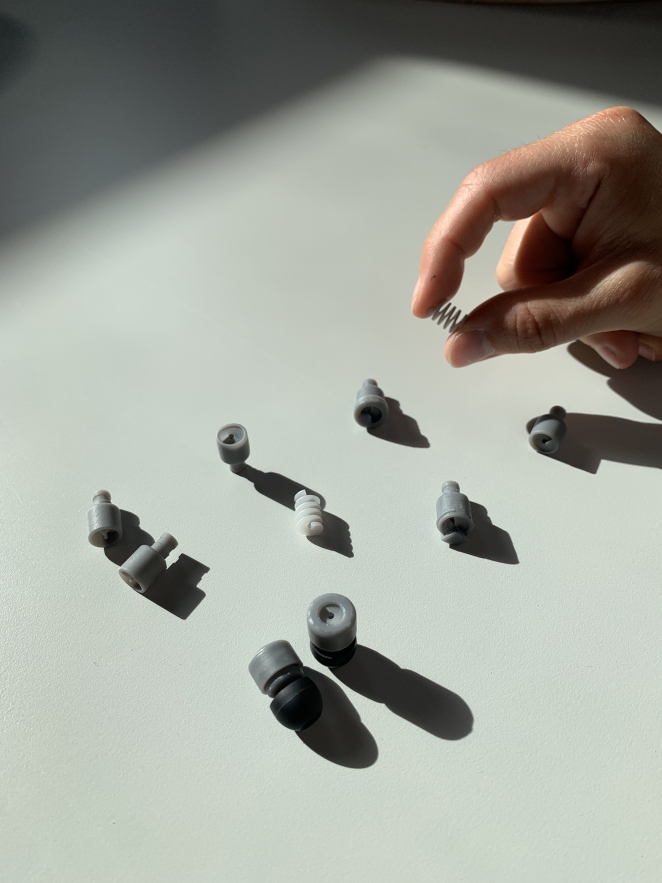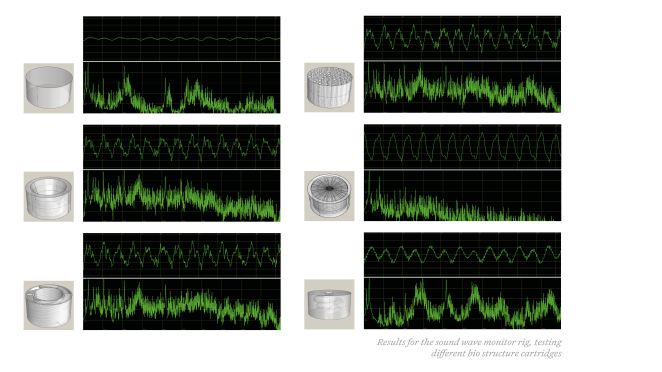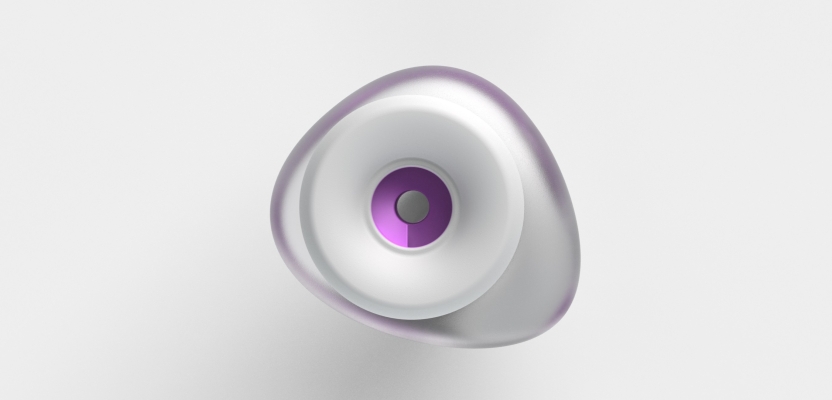Design agency Matter has collaborated with University of the Arts London to develop a concept for a bio-inspired sustainable earplug using the natural form of a helix to reduce material needed to efficiently block out sound.
The concept takes inspiration from helical structures found in nature (such as in shells and DNA) to create an adjustable earplug to help tackle anxiety and help people focus and relax in over-stimulating environments. It was developed following a thorough R&D process which involved testing the acoustics and attenuation of different biological structures.
To learn more about this process and gain some insight into the design process of this fascinating and unique device, I sat down with Jonathan Sturgess, Design Director at Matter.
What inspired you to collaborate with University of the Arts London on this project?
The opportunity came to us from the fantastic British institution that is the Crafts Council. Last summer they ran an initiative centred around bio-inspired design. We were invited to pitch to take part in a design sprint exploring and developing a concept for a bio-inspired product.

Successful applicants were given some funding and access to a host of specialists, academics and a collection of bio-inspired design course material developed by University of the Arts London (UAL). This kind of open brief and working process invites speculation, fast-paced prototyping, testing and iterating, all of which very much float our boat at Matter.
How did you approach the design process of the bio-inspired earplug? What were the main challenges and opportunities?
Having digested the UAL’s Bio-Inspired Design course, we did whatever we could to become versed in acoustics, human hearing and the marketplace possibilities for a product in that space. We prototyped and developed our in-ear concepts through hand making, modification of existing products and 3D printing.
We tested everything we made (a little over a hundred components) for efficacy and investigated any other interesting observations that came up unexpectedly. Developing a product alongside a university and an organisation dedicated to showcasing innovative craft brings some unique elements to the process. Principally, a culture of and dedication to, unfettered creativity and exploration.
How does the helical structure of the earplug reduce material usage and enhance sound blocking efficiency?
The design of the Helical Earplug uses a single material for the main assembly and reusable tips. The helical cartridge delivers sound attenuation without the need for multiple materials or complex electrical components. The effects can be adjusted by compressing or relaxing a flexible helical core.

When rotating the outer ring of the bud, the user can tune ambient sound to achieve a less distracting and cluttered acoustic environment. It works by simply altering the shape and size of the passageway through which sound travels to the inner ear.
How does the earplug adjust to different ear sizes and shapes? What are the benefits of having a customizable fit?
The earplug assembly works in the familiar way, with reusable tips in various sizes. It is of course important to achieve a full seal between the bud and the inner ear to ensure the majority of sound passes through the product and not around it.
How does the earplug help people cope with noise pollution and its effects on mental health? What are some of the scenarios where the earplug can be useful?
With the impact of noise pollution on both mental and physical health being increasingly understood, we chose to create a product concept designed to support wellbeing for an inclusive breadth of users in an ever-stimulating world.
The design process required us to complete extensive research into acoustics and develop a thorough understanding of bio-structures, preceding creative exploration and design development.

Reading through work others have done in this space we learned more about the effects of extended exposure to various frequency-bands and which of them had the potential to significantly disrupt concentration etc. We were then able to refine our approach on which frequencies to target and how to achieve it.
We can see huge potential benefits to people living and working in busy environments, at crowded events, shared office spaces, and for sleep, to name a few.
How did you test the acoustics and attenuation of the earplug? What were the results and feedback?
We measured the way our prototypes affected the attenuation of various frequencies using a test-sound we created. This very unpleasant sound emitted a broad spectrum of frequencies at a uniform amplitude. We recorded these sounds, simultaneously using a number of different kinds of microphone.
We used wavelength monitoring software to analyse both the frequencies being emitted and those still present having passed through the filter. We also made an ‘experience rig’ which could be worn to better understand the reality of how the effects of the various filter iterations felt to a user.
How does the earplug compare to other existing earplugs in the market, especially in terms of sustainability and functionality?
Unlike other attenuating earplugs on the market, the Helical Earplug uses minimal resources and components with a disassemblable and repairable structure made in a mono-material.

Longevity and resource recoverability were key deliverables when designing the product.
What are the next steps for the development and launch of the earplug? How do you plan to market and distribute it?
The outcome at this point is not an optimised and fully refined product but is the initial embodiment of a novel and potentially life enhancing new product. We will look to work with a commercial partner to take it to the next stage in its journey toward production. We may also continue to collaborate with UAL as the proposition develops.
What are some of the broader implications and applications of bio-inspired design for the creative industries?
There are certainly interesting avenues of exploration down which we may not have travelled had we not been looking for inspiration from natural structures etc. Whilst we might not seek to apply bio-inspired principles to everything we do, this project demonstrates that naturally occurring structures can be applied creatively to design solutions for human problems and can act as a genuine driver of innovation.
What are some of the lessons learned and best practices from this project that you would like to share with other designers and innovators?
I think for us the project has helped bring into focus the many benefits of pursuing projects from less traditional sources. Historically we have principally operated by answering client briefs in the established way.

Increasingly though, we are identifying and/or actively courting new pathways, answering and co-creating briefs that come to us from new and sometimes surprising places. These varied ways of working bring new challenges and bring us into contact with individuals and organisations with whom we would otherwise not have had a chance to collaborate.




